Double-cab pickups to get pricier – here are alternatives
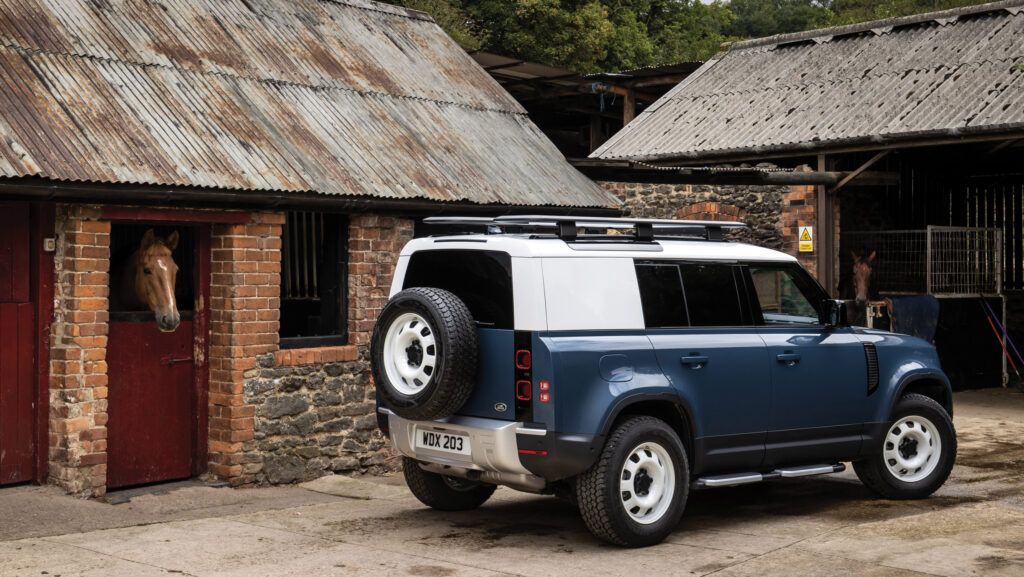 © Land Rover
© Land Rover Pull into the car park of any agricultural event and there’ll be a sea of double-cab pickup trucks as far as the eye can see.
But a shake-up of the way these and extended-cab models are taxed means that, from 6 April 2025, this market dominance could be called into question.
Those running such a vehicle as a company car will be the hardest hit, with many facing five-fold price hikes as benefit in kind (BIK) tax becomes based on carbon dioxide emissions rather than a flat rate.
See also: On test: Base-spec and bestselling Ford Ranger pickups face off
However, businesses buying one as a capital asset will also feel the pinch, whether it is a new purchase or second-hand.
This is because past rules allowed them to be written off entirely against tax in the year of purchase, whereas most will now be capped at 6% per annum.
Not all the perks have been removed though, with buyers still able to claim back VAT, providing the vehicle they buy can carry a payload of more than 1t.
Plus, the fact they are still classed as light goods vehicles from a vehicle excise duty (VED) point of view, means they’re subject to a flat rate (£335/year at the time of writing).
Unlike the system for cars which – like BIK – is based on carbon dioxide emissions.
Added to that, there are transitional arrangements for purchases made before the new rules kicked in.
So although the incentives for running a double-cab pickup are lower, they are still more favourable than many large SUVs that are capable of towing 3.5t.
That said, for individuals or businesses that can manage without a second row of seats, some other types of four-wheel drive commercial vehicles could now be more attractive propositions.
One word of caution, though. Tax implications can vary depending on business setup and the type of use, so it’s wise for anyone tempted to purchase one of these vehicles to talk to their accountant before taking the plunge.
Single-cab pickups
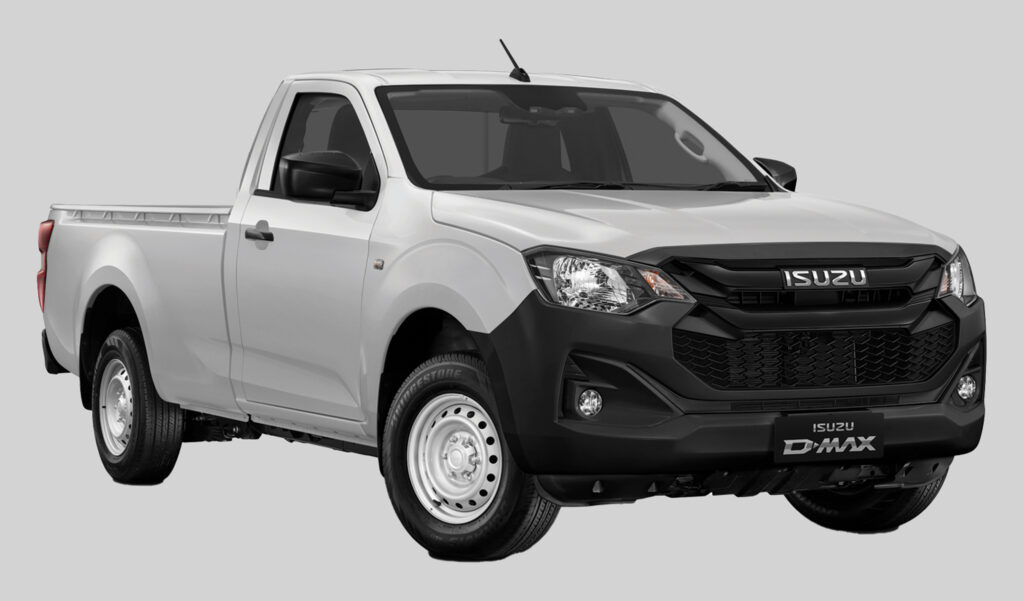
© Isuzu
Before the double-cab boom, there were plenty of single-cab pickups knocking about on farms so, for those that seldom require a second row of seats, they could be worth considering.
They’re cheaper to buy and have a far larger load bed for carrying gear, which could reduce the amount of towing work required.
A slight concession is the fact that these trucks are often only available in base trim levels, but they generally have plenty of features for a working vehicle.
One of the options on the table is the Isuzu D-Max Utility, priced from £27,495. For this, buyers get the same 1.9-litre engine as the rest of the range which puts out 164hp and 360Nm of torque.
This is allied to a six-speed manual transmission with either rear-wheel drive or switchable four-wheel drive running gear.
Up front, there’s seating for two passengers, which leaves room for a huge 2,315mm long rear cargo area capable of carrying a 1.2t payload. Official towing capacity is also on par with the best, at 3.5t.
Standard features include automatic halogen headlights, rain-sensitive wipers and air conditioning, plus a touchscreen display that’s compatible with Apple CarPlay and Android Auto.
Also in the offing is the Ford Ranger XL Single Cab, prices for which start at £29,275.
Propulsion is provided by the firm’s 2-litre Ecoblue four-cylinder diesel, which puts out 170hp/405Nm via a six-speed manual transmission.
All models are fitted with switchable four-wheel drive, have a 2,332mm long load bed that can carry a shade under 1.2t, and can tow trailers weighing up to 3.5t.
Inside, there’s a functional cloth interior, large portrait touchscreen display and basic heater/ventilation system. Air conditioning can be added from the options list.
Toyota usually has a single cab pickup, but the old model has sold out and an updated version is expected soon. We’re also holding out hope for a commercial version of the firm’s new Land Cruiser.
Ineos Grenadier Commercial
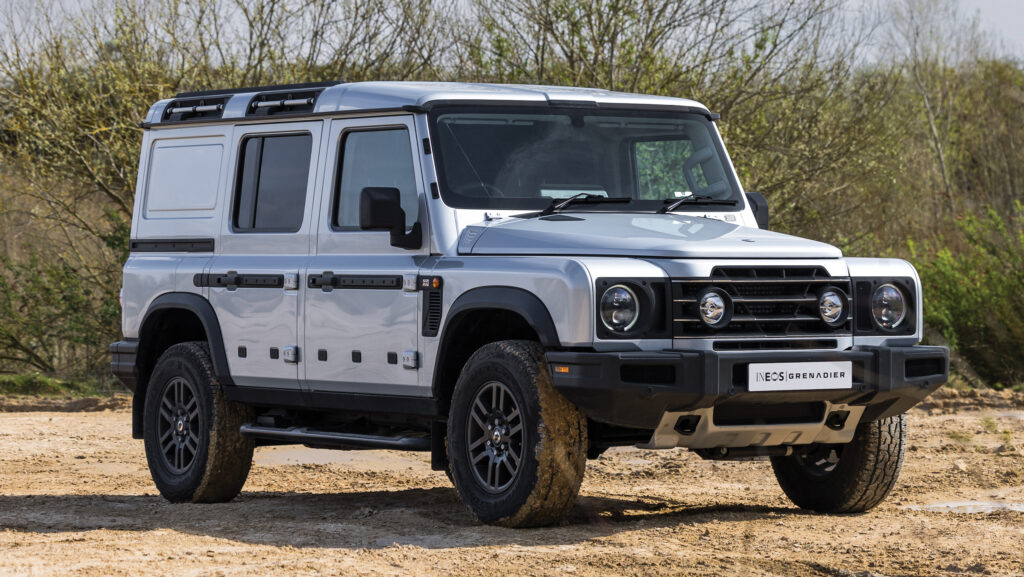
© Ineos grenadier
By stripping the rear seats out of its Grenadier Utility Wagon to form a capacious load area, Ineos has created a bona-fide commercial vehicle.
Just like its passenger-carrying cousins, there’s a gutsy 3-litre BMW six-cylinder diesel engine up front that puts out a generous 249hp and 550Nm.
Or, for those seeking even more power, a 286hp/450Nm petrol.
Both of these are paired with an eight-speed ZF automatic transmission that drives a two-range transfer case delivering permanent four-wheel drive.
As for its load-lugging credentials, the 2,000-litre cargo area is large enough to swallow a Euro pallet and it can carry an 800kg load while towing a trailer weighing up to 3.5t.
Other selling points include a solid steel ladder chassis with layers of corrosion protection, galvanised steel bodywork and myriad options for accessories and equipment.
In the remodelled cabin, there’s seating for a driver and passenger who are separated from the cargo area by a mesh bulkhead.
Controls are similar to top-spec models, with a smorgasbord of buttons and switches, as well as a touchscreen central dash display.
Prices start at £51,931.
Foers Ibex

© Foers

© Foers
Custom off-road vehicle maker Ibex offers a plethora of body styles, several of which are classed as commercial.
These include both vans and chassis cabs, which can be configured with different seating arrangements.
The most recent addition is the 2+2 cab, which has one set of doors and two rows of seats – the rears accessed via the front.
It’s classed as a light goods vehicle and can be configured with either four or six seats.
Like all Ibex vehicles, it’s constructed around a heavy-duty galvanised chassis and cabin monocoque wrapped in aluminium body panels, which are both bonded and riveted in place.
These tough underpinnings mean it can handle payloads of 1.5t and permit the towing of trailers weighing up to 3.5t.
Drivetrains mirror that of many rugged off-roaders, with a high/low transfer box offering permanent four-wheel drive, a central diff-lock and the option of axle diff-locks.
Most of this is Land Rover derived, but there are options to have heavier-duty aftermarket upgrades.
When it comes to power plants, buyers get plenty of choice.
At the cheaper end of the spectrum, second-hand Land Rover 300tdi or TD5 engines and gearboxes can be fitted, with six-cylinder BMW blocks from a 330D available for those that want some extra oomph.
For maximum performance there are spicy LS and LT V8 engines built by GM or, alternatively, batteries and an electric motor.
Interior spec is equally versatile, ranging from basic and mud friendly to plush and comfortable. Levels of technology are adaptable too, with top-end models sporting a touchscreen display.
An added bonus, because Ibex is a low volume manufacturer, is that all models are taxed at a pre-2001 fixed rate, rather than one that’s based on their carbon dioxide emissions.
Prices for the 2+2 are yet to be confirmed.
However, figures for other Ibex models range from about £10,000 for a DIY chassis and body kit (buyers can build this up themselves) to almost £80,000 for a fully kitted out model with new V8 engine and running gear.
Complete vehicles with used drivetrains start at about £47,000.
Land Rover Defender Hard Top 90 and 110

© Land Rover
The Defender might not be the no-frills workhorse it once was, but Land Rover still offers versions for commercial users.
As the rule book decrees, both the short-wheelbase 90 and long-wheelbase 110 Hard Top models only have front seating, with the rear area dedicated purely to cargo.
However, unlike many of its peers, there’s space for three passengers thanks to a neat, folding middle seat. When not in use, this doubles up as an armrest and cup holder.
Buyers get a choice of two six-cylinder, mild-hybrid diesel powertrains, with the D250 putting out 249hp and D350 a heady 350hp.
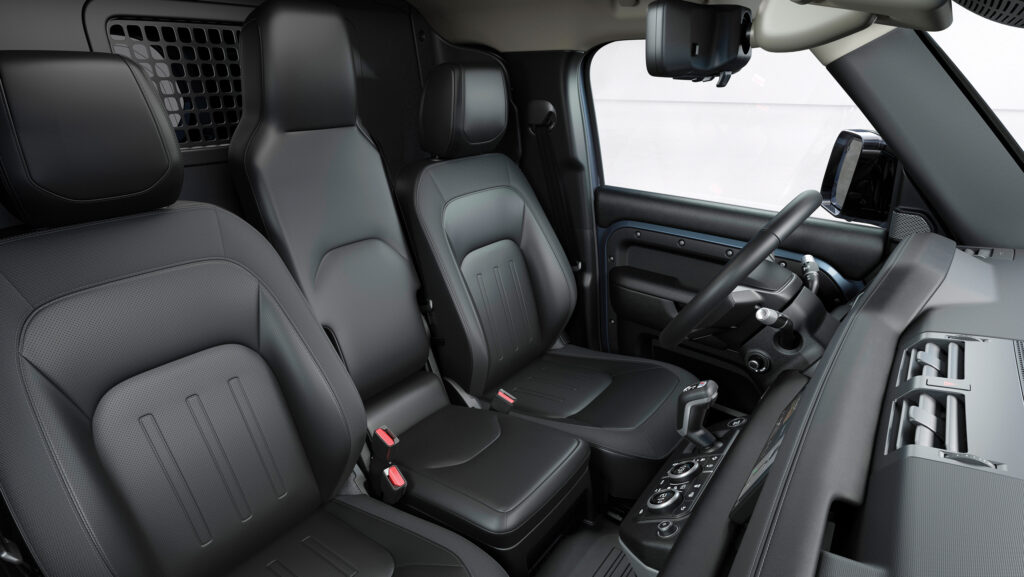
© Land Rover
There are also three interior specs to choose from. Basic S versions offer rudimentary cloth seats and rubber matting, while top-spec X-Dynamic HSEs are leather-clad and luxurious.
When it comes to storage space, the 90 is rated to carry a payload of 670kg and has a 1,355-litre capacity.
This rises to 800kg and 2,029-litres on the 110, making it large enough to accommodate a Euro pallet.
Like all modern Defenders, the Hard Tops are constructed using an aluminium monocoque, rather than the old-school, body-on- chassis design.
This is lighter and supposedly stronger, meaning it can comfortably tow 3.5t.
Prices for base-spec S Hard Top models start at £47,525 for a 90 and £51,558 for a 110.
Those seeking a more refined ride have the option of the Discovery Commercial, which features the same D300 engine available in top-spec 110 Hard Top Defenders.
Imported Toyota Land Cruiser 79 series
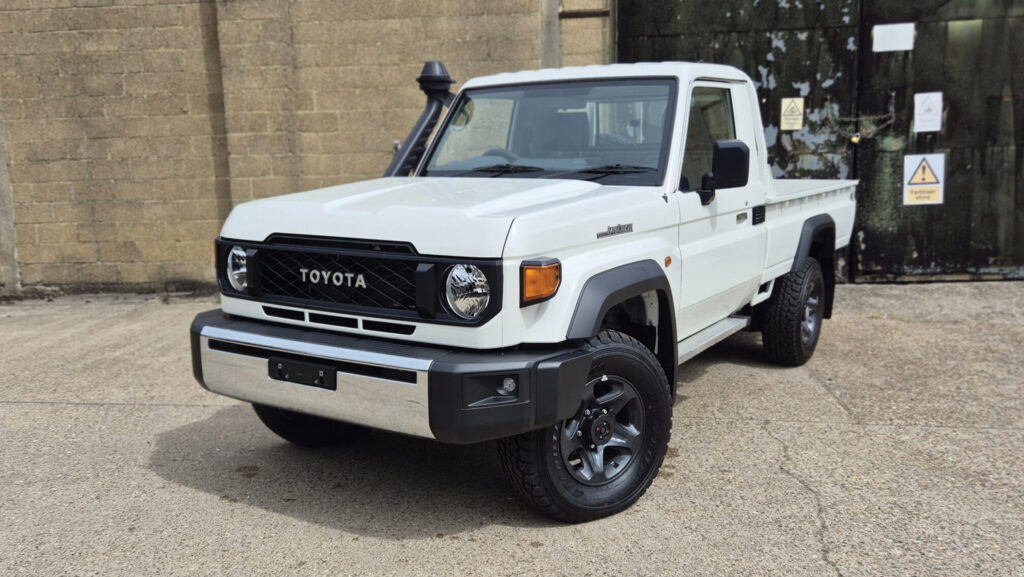
© Toyota
Buy a Toyota Land Cruiser in the UK through normal channels and the only model on the table is the swish SUV version.
But go through an importer such as Rowlands and Hordon Automotive Solutions and there’s considerably more choice.
From a working point of view, the rugged 70 series is the model of note. Designed to toil in some of the globe’s most inhospitable regions, it’s both basic and built to last.
Several body styles are available, including a station wagon and troop carrier. But the single- or double-cab pickups – known as the 79 series – are most likely to appeal to agricultural customers.
Older versions of these workhorses sported straight-six or V8 diesel engines, but newer iterations feature a 2.8-litre four-cylinder.
This is similar to the oil burner fitted in the UK-spec Land Cruiser, minus the emissions paraphernalia.
These are allied to either a five-speed manual or automatic transmission with a simple part-time four-wheel drive system and high/low transfer box.
Single-cab 79-series pickups are clear-cut candidates for commercial status, but the firm says double-cab versions also sit outside the new tax rules for pickups.
This is because they are classed as drop-side chassis cabs.
Both second-hand and new models are available, with buyers able to choose whether they have right- or left-hand drive. Paint options are limited though, with most arriving in white or beige and some in grey.
Prices for second-hand models vary according to age and mileage, with new 2.8-litre single cabs costing from £62,995 and double cabs from £67,000.
MAN TGE 4×4 van
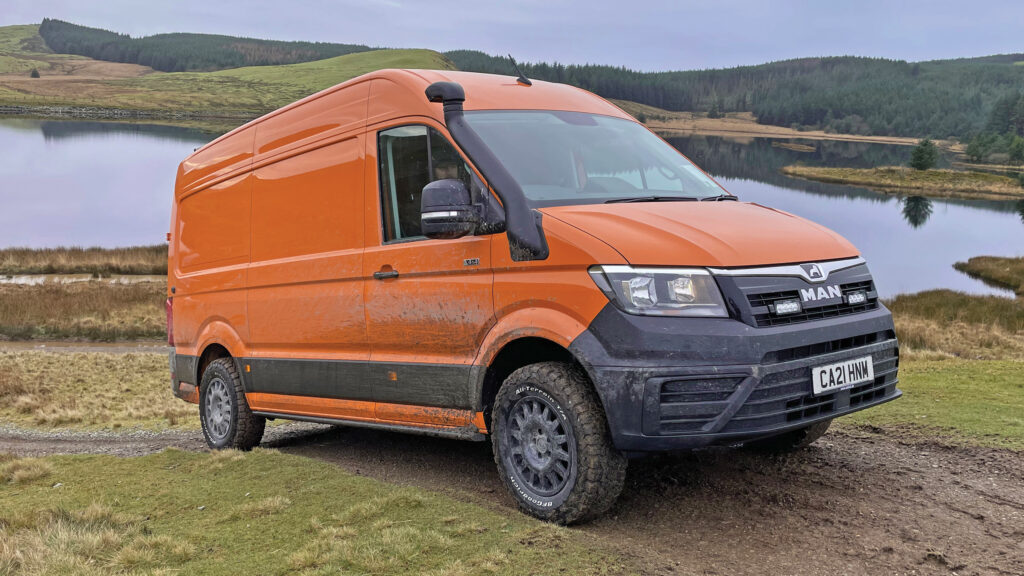
© Man
Vans are another way to go, with a few models offering the option of four-wheel drive.
One of these is the MAN TGE, available in conventional panel-van configuration, a single chassis cab, or crew cab.
There’s little to dispute the commercial status of the first two, but the four doors and twin row of seats in the latter could cause complications for some business users.
Headline stats include a 3t towing capacity and 173hp power output which comes courtesy of a 2-litre, four-cylinder VW diesel engine.
Two transmissions are offered – a six-speed manual or eight-speed automatic – both of which work with a Haldex on-demand four-wheel drive system.
This means it has a front-wheel-drive bias with power sent to the rears when required.
Despite this off-road ability, these vans leave the factory in a fairly road-focused spec.
This is where firms such as Volkstrek and Torsus come in, fitting lift kits, breathers, skid plates and chunky off-road tyres.
Prices for four-wheel drive chassis cab models start at about £45,500, with panel vans available from £48,000.
Two-wheel drive vans
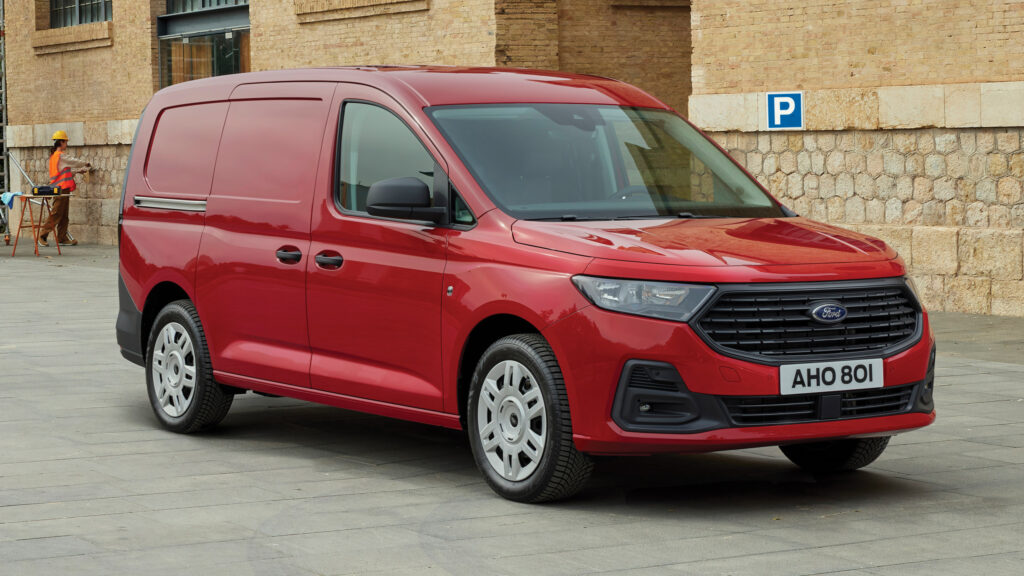
© Ford
For those that can manage without four-wheel drive and don’t need to tow heavy trailers, small front-wheel drive vans are some of the most affordable run-arounds out there.
Prices for a Ford Transit Connect with 2-litre diesel engine and six-speed manual gearbox start at £24,840, for which buyers get a 3.7cu m load area, 790kg payload and seating for two.
Models are available with a flexible bulkhead, allowing users to switch between one or two rows of seats, and there’s an electric drivetrain in the offing.
For tips on buying second-hand vans, see Investing in a runaround: Second-hand vans compared

